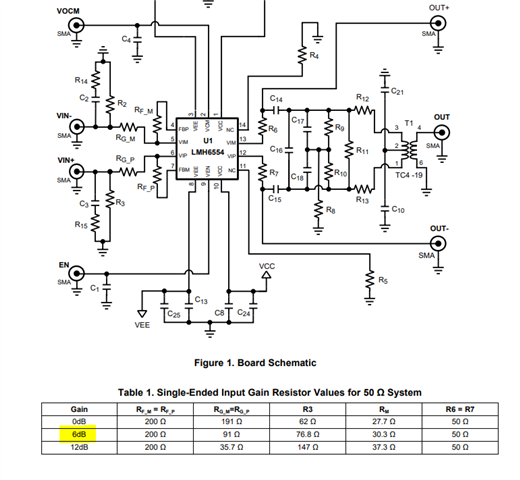I'm following the guidelines from the LMH6554 datasheet and the evaluation board sheet for my design. I realized there are a couple of discrepancies in the application information for single-ended input to differential output conversion on page 15 of the datasheet and page 1 of the evaluation module guide. The resistance R_T that is mentioned in the calculations of the datasheet doesn't show in the board schematic of the evaluation board, so does this resistance correspond to the parallel equivalent of R_3 and R_15? What about the capacitance? Finally, the evaluation board sheet claims that one should use the capacitor C_3 for AC coupling but then it recommends using the VIN- input is this correct or a typo?
-
Ask a related question
What is a related question?A related question is a question created from another question. When the related question is created, it will be automatically linked to the original question.



